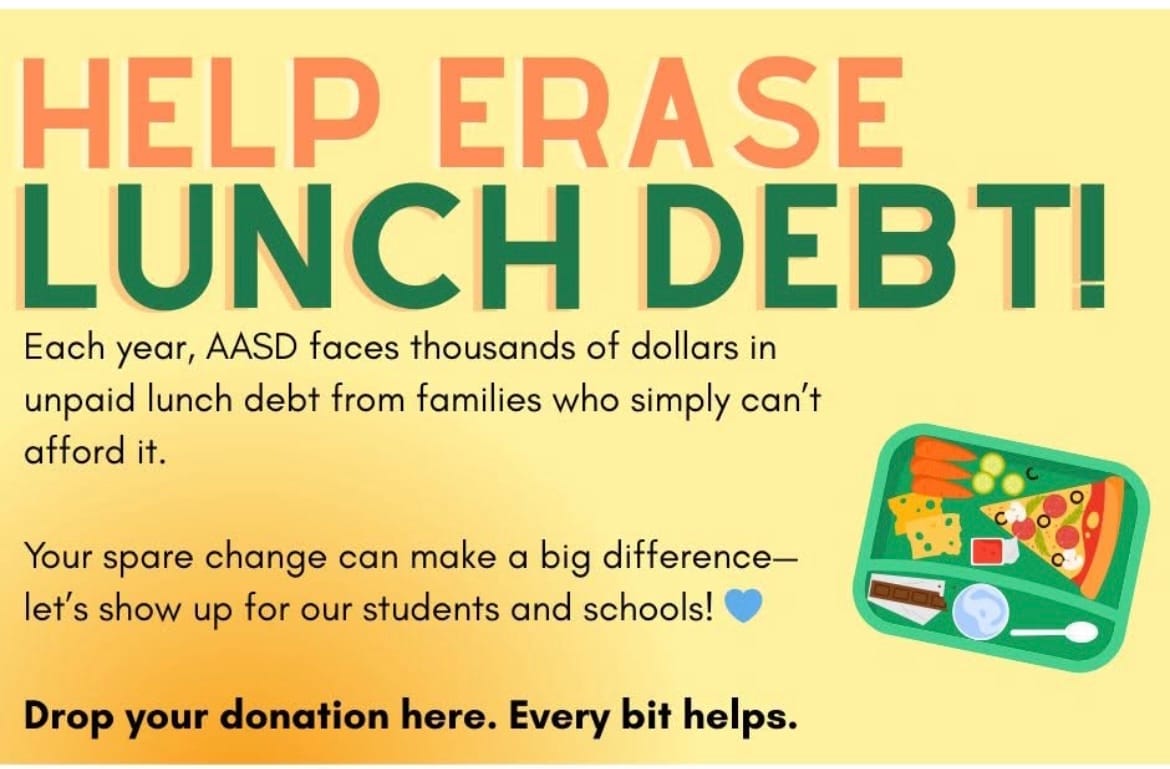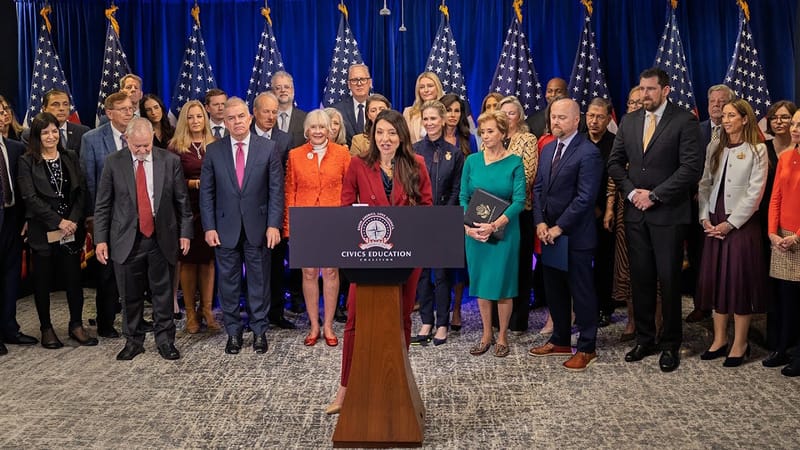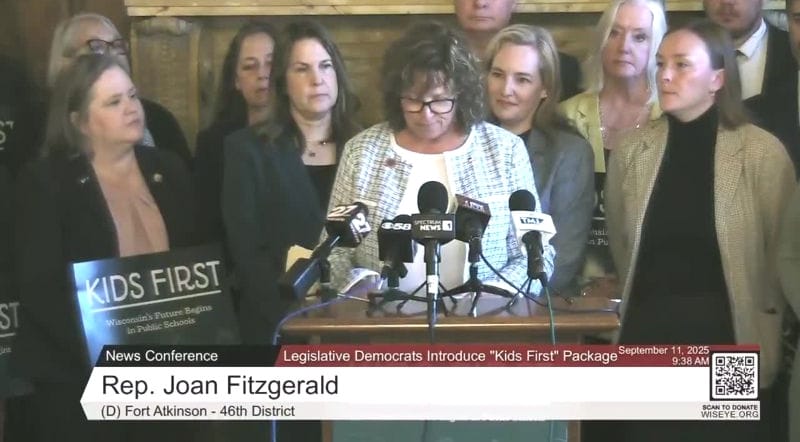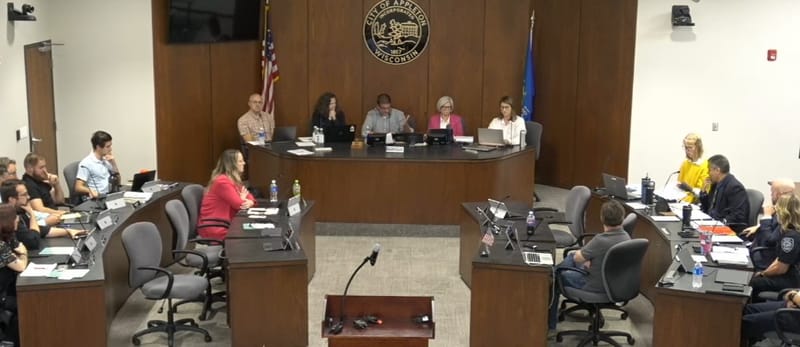Local neighborhood group pitches in to raise money for school lunch debt relief
A number of members of the group are themselves former educators and have grown concerned about what they see as a general lack of support for public education from both the state legislature and now the federal government.

With political divide infecting our modern politics one local neighborhood action team decided to eschew politics entirely and focus on common values they believe are shared by most Americans.
Northside Neighbor2Neighbor, a newly created group in North Appleton that had grown tired of the lack of action among our state and federal leaders, locked on to a project recently to help students in need within the Appleton Area School District.
“Northside Neighbor2Neighbor is a group of individuals from our neighborhoods who come together to discuss and address the concerns and needs resulting from decisions that drastically change the lives of our neighbors,” says member Kathy Kraus. “It is the hope of the group to build stronger neighborhoods through dialogue and action.”
Ann Muenster, another member, says the group came together around common values. Values, she says, that she hopes all Americans share. Among those are helping people in need.
“We want to support people within the community,” she says. “We also believe that government is not really working for the people. So we decided to do what we can do and we put our forces together.”
Over the years, the Appleton Area School District has run up a debt of more than $80,000 covering the lunch costs of at-need students who don’t qualify for government support but whose families could not afford the nearly $15 per week for school lunches.
Northside Neighbor2Neighbor decided to raise funds to help offset some of that debt and to help senior students pay for their lunches. A number of members of the group are themselves former educators and have grown concerned about what they see as a general lack of support for public education from both the state legislature and now the federal government.
Muenster points out that state revenue for public education has not kept up with inflation in any of the past 15 years as the district falls further and further into debt. That school lunch debt is money the district has been forced to transfer out of an ever-dwindling general fund.
“On top of that the Appleton Area School District began this year with a $13 million deficit and will actually be looking at putting an operating referendum on the ballot next April,” Muenster said. “And that’s really only because the state legislature has failed public education.”
Helping students in need
The federal Community Eligibility Provision (CEP) mandates that all students in any elementary, middle and high school receive a free lunch if 25 percent of that school’s families are enrolled in certain federal assistance programs, such as SNAP or Medicaid. At schools which don’t meet that threshold (non-CEP schools) students whose families live below the federal poverty level also receive free lunches.
That leaves students at non-CEP schools whose families’ income is just above the poverty level and thus do not qualify for a free lunch. Many of those students wind up in debt when they can’t afford to pay the nearly $15 per week.
All of this comes against the backdrop of rising housing, food and energy costs as well as cuts to food assistance and health insurance subsidies. The Department of Health Services estimates that as many as 90,000 Wisconsinites might be impacted by cuts to FoodShare – the food subsidy program for struggling families.
A recent report revealed that more than 600 Appleton Area students at the end of last school year qualified for homelessness support. That number is expected to grow. For some of those students that school lunch may be the only nutritious meal they receive during the day.
“The Freedom School District had to do the same thing as we did,” says NN2N member Sally Huntington. “And in little Gresham, Wisconsin, their public school held a fundraiser for this. And I just keep coming back to my grandson saying to me, ‘Grandma, no kids should be hungry.’
“And that just really hurt.”
Northside Neighbor2Neighbor began planning the event months ago, finally deciding on a three-pronged approach: a rummage sale; donations canisters placed at retail outlets and restaurants around the area; and appeals for direct donations.
‘The awareness is out there’
The rummage sale, held over three days in early September, raised $6,000, well above what the team expected. With the canisters around town for an indefinite period, more direct donations expected and a tabling opportunity at the Appleton North-Kimberly football game on Oct. 17, that total is sure to grow. Meanwhile, a check from the rummage sale will be presented soon to AASD, hopefully, they say, with media coverage so that other people in the Fox Valley can understand what is at stake.
Margaret Kroll, another NN2N member, said the endeavor took a lot of work but not more than she expected.
“I’ve had my own rummage sales,” she says. “And I know what it takes so I was not surprised. But the scope of it made for even more work of course because we didn’t know how many people would donate.”
The five-day event (there were two days of setup) required 12 shifts of at least three hours. The NN2N recruited members outside their group to help out. Fifteen people took at least one shift.
And the shoppers came, many unaware of the cause, others unaware of the problem itself. The event, in other words, served two purposes: raising money and raising awareness.
“During the sale, people were coming up and asking, what is this about,” Margaret says. “And then, oh, thank you for doing this. It does feel good to have people express their gratitude for their neighbors stepping up and doing something good for others. The awareness is out there and that’s just as valuable.”
Muenster says she saw the satisfaction on visitors’ faces when they realized they were helping others out with their purchases. Still others used the Venmo QR code at the cash box to donate more money directly.
“We were a small group,” Muenster says. “But we also provided an opportunity for so many countless people and I think it empowered them to know that they helped make a difference in their community.”






